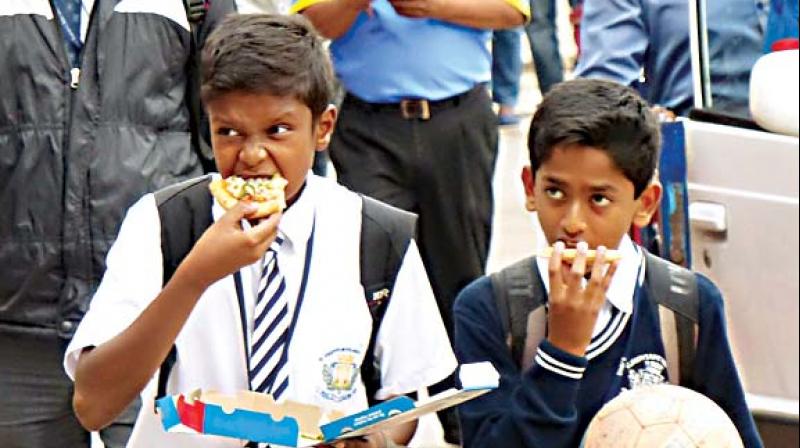Junk food effect: Anaemia on rise among kids
The study also found that the most common cause of anaemia was iron deficiency.

Bengaluru: Unhealthy lifestyle and junk food is not just taking a toll on the adults, even the children are not free from its ill-effects. Doctors and health experts claim that anaemia or iron deficiency among children and infants in the city is growing rapidly.
A study conducted by diagnostic centre R.V. Metropolis reveals that around 40% of children in Bengaluru within the age bracket of 0-20 years were found to be anaemic.
In the age bracket of 0-10 years, around 35% of children tested were having abnormal levels of hemoglobin (Hb) and it further increased to 41% for children tested in the age bracket of 10-20 years.
Dr Ravi Kumar, Chief, R.V. Metropolis said, “It is important to consume foods rich in iron. Vitamin C helps in absorption of iron and should always be included in the diet. Another important thing to keep in mind is that tea and coffee interferes with the absorption of iron and hence it is important to time your supplements well. Keep monitoring your Hb levels so you can be sure that you are not anaemic.”
The study also found that the most common cause of anaemia was iron deficiency. In rare instances there could be other reasons and some of the conditions are inherited.
Aplastic Anaemia is when the bone marrow is unable to make enough RBCs, G6PD Deficiency (this enzyme protects RBCs from by-products of medication or disease). Other reasons for anaemia could be thalassemia where RBCs are destroyed at a faster rate than they are produced.
Sickle Cell Disease is where the shape of hemoglobin is altered to a sickle shape. These cells are then unable to move freely in the body and hence leading to oxygen deprivation in the body’s tissues and organs.
The most common signs to watch out for anaemia would be lethargy, unexplained fatigue, pale skin, and pale eyes. The more severe form of anaemia is characterized by a behavior called as pica where the child builds a tendency to eat dirt, clay, and other unusual substances.
Dr. Neema Bhat, Consultant Pediatric Hematologist-Oncologist and BMT Physician, BGS Gleneagles Global Hospitals said, “Optimum hemoglobin is vital for a child’s wholesome mental and physical development, including their memory. One of the most common reasons for low hemoglobin in children is due to insufficient iron intake through diet and excessive intake of milk. Although milk is a good source of protein, a balanced diet including green leafy vegetables and fruits is extremely important as a good source of iron.”
She also pointed out that it is important to ensure complete testing to rule out genetic conditions that cause anaemia like thalassemia and sickle cell anaemia as these conditions will need to be managed by a hematologist.

